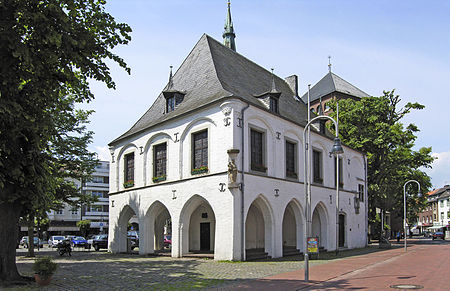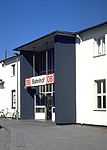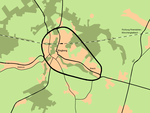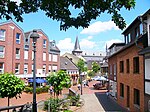Erkelenz

Erkelenz (German pronunciation: [ˈɛʁkəlɛnt͡s] (listen), Limburgish: Erkelens [ˈæʀ(ə)kəlæns]) is a town in the Rhineland in western Germany that lies 15 kilometres (9 miles) southwest of Mönchengladbach on the northern edge of the Cologne Lowland, halfway between the Lower Rhine region and the Lower Meuse. It is a medium-sized town (over 44,000) and the largest in the district of Heinsberg in North Rhine-Westphalia. Despite the town having more than 1,000 years of history and tradition, in 2006 the eastern part of the borough was cleared to make way for the Garzweiler II brown coal pit operated by RWE Power. This is planned to be in operation until 2045. Over five thousand people from ten villages have had to be resettled as a result. Since 2010, the inhabitants of the easternmost village of Pesch have left and most have moved to the new villages of Immerath and Borschemich in the areas of Kückhoven and Erkelenz-Nord.
Excerpt from the Wikipedia article Erkelenz (License: CC BY-SA 3.0, Authors, Images).Erkelenz
Am Ziegelweiher,
Geographical coordinates (GPS) Address Nearby Places Show on map
Geographical coordinates (GPS)
| Latitude | Longitude |
|---|---|
| N 51.083333333333 ° | E 6.3166666666667 ° |
Address
Am Ziegelweiher 1
41812
North Rhine-Westphalia, Germany
Open on Google Maps










